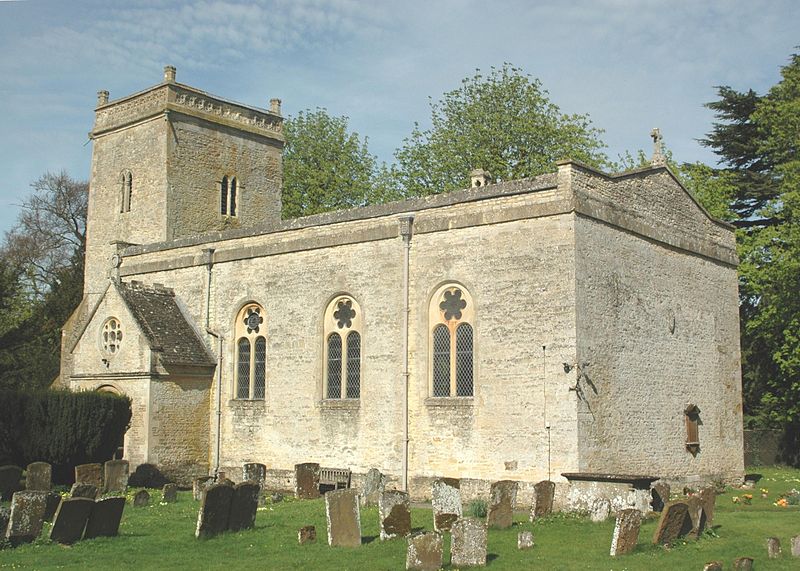Arthur Mee - The King's England, Oxfordshire.
Weston-on-the-Green – The Tudor Manor House.

The great house stands on the site of one belonging to the abbots of Osney. We see it through a neat avenue of trimmed limes. It has a slender tower and is flanked by gabled windows. Its wayside gates have stone pillars with crests of a crowned head with long hair and beard, and the inner court has another gateway with crests. The old moat is used as a swimming pool. Inside is a minstrels gallery, and a 14th century hall with linenfold panelling from Notley Abbey in Buckinghamshire.
In a beautiful corner of the village shaded by trees is the lofty church made new after a fire 200 years ago – all but its fine old tower, which is Norman at the base, 13th century in the middle, and 15th century at the top. Saved from the fire also was the finely arcaded Norman bowl of the font.
The extraordinary square doorway has a pediment with a mass of classical carving in which are heads of lions, fine work of a kind unusual at a church door. It is neat and spacious within, the chancel and nave all one, with oak lining the white walls. The reredos has an Italian painting, and over it a huge red canopy extending across the sanctuary. On the altar is an Italian tryptych with Mary and two saints, resting on an embroidered cloth of gold from a Russian cope.
A rare thing hanging on the wall by the pulpit takes its imagination back to the Spanish Armada days. It is a fine iron cross with an open centre, and on its shaft a ring for a rope, while at its base are masthead fittings. They tell a tale, for in this cross a light used to hang at night on a galleon of the Spanish Armada as it sailed the seas.
W. Hobart Bird – Old Oxfordshire Churches.
The church is in very pretty surroundings; dedicated to St. Mary, it was entirely rebuilt except the tower in 1743. Excepting the parapet the tower is good Early English. The lower stage has a tall lancet window and in the upper stage the belfry sound-holes have pairs of lancets within heavy arches and with a central pillar, which has rudely moulded capitals.
The South doorway is most extraordinary – a bad imitation of classical style, with some intolerably ugly details. The inner door arch also is “classical” with the “egg and spoon” of that style in the jambs and lintel.
The tower arch to the nave is Early English. The octagonal font is interesting. A Norman cylindrical bowl on a later octagonal stem and base, it has a not uncommon arcade of slender intersecting arches.
There is a huge oil painting above the altar. Near the pulpit is a very old wrought iron cross with a quatrefoil centre. Its use is a problem. The old parish stocks are protected within iron railings